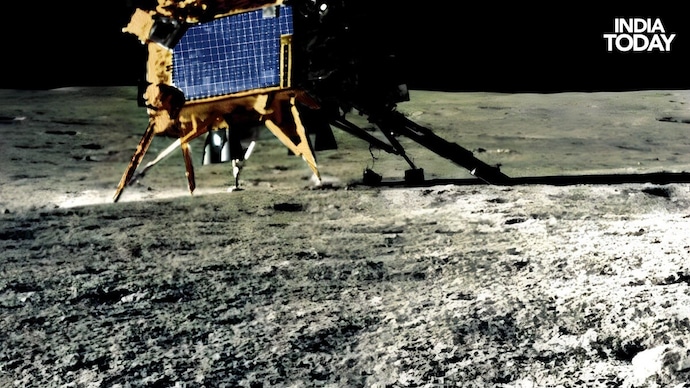Vikram lander's sudden hop on the Moon: Why it's a big deal
The Vikram Lander, which touched down on the moon's surface on August 23 conducted, previously announced, hop on the Moon as it went up and landed again.

In Short
- During the hop experiment, the lander fired its engines
- It elevated itself by about 40 centimeter
- It landed safely at a distance of 30 - 40 cm away
In a significant leap for India's lunar exploration, the Indian Space Research Organisation (Isro) announced that its Vikram Lander has exceeded its mission objectives. The lander, part of the Chandrayaan-3 mission, successfully completed a 'hop experiment', marking a new milestone in space exploration.
The Vikram Lander, which touched down on the moon's surface on August 23, was designed to study various aspects of the lunar environment.
During the hop experiment, the lander fired its engines on command, elevated itself by about 40 centimeters as expected, and landed safely at a distance of 30 - 40 centimeters away from its original spot at Shiva Shakti Point.
What does it mean?
The hop shows the capability of the Chandrayaan-3 system to lift-off from the surface of the Moon, effectively meaning that a future mission could be developed that could return samples from the lunar surface to India.
This successful maneuver is expected to open up new possibilities for future lunar sample returns and human missions to the moon.
Several countries in the world, including the US and China, have that capability. While Nasa's Apollo mission was the first to return samples from the surface of the Moon, China's space agency also possesses similar technology.
Opens new doors for India
The success of the Vikram Lander has far-reaching implications for India's lunar exploration. As the fourth country to reach the moon, India's successful mission is expected to boost the country's growing private space sector and provide research opportunities.
The successful hop experiment also signifies India's capabilities in space exploration, potentially attracting international investments into the country.
Moreover, the triumphant soft landing of the Vikram Lander could significantly enhance investor confidence. Market watchers believe that the mission's success, made possible by the hard work of Isro and many listed firms, could unlock novel commercial avenues in the space domain.
Sectors such as telecommunications, remote sensing, and satellite navigation stand to benefit, potentially catalysing job generation and spurring economic growth.
The Vikram Lander's successful hop experiment also holds promise for future lunar missions. The lander and its rover are equipped with scientific instruments designed to discover the physical characteristics of the moon's surface, the atmosphere close to the surface, and the tectonic activity below the surface.
These findings will contribute to our understanding of the moon and pave the way for future explorations.
The hop not only showcases India's capabilities in space exploration but also opens up new possibilities for future lunar missions.


